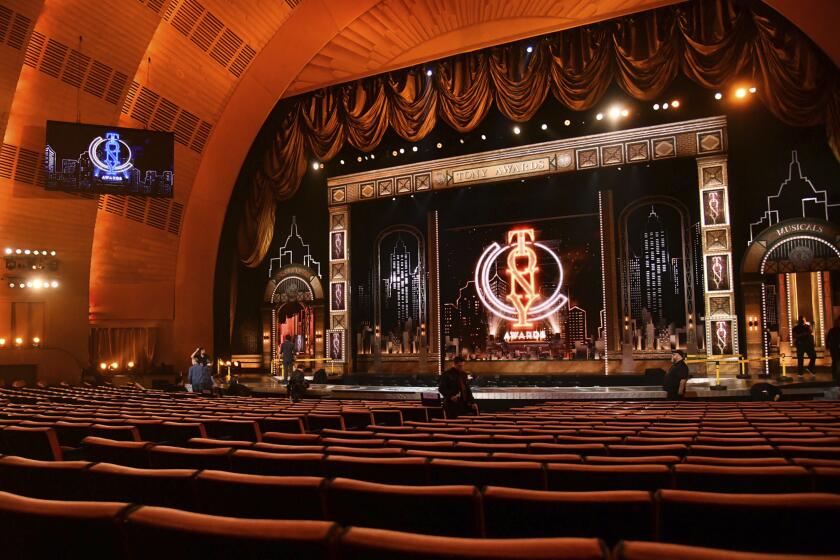WILSHIRE CENTER
- Share via
A survey of black-and-white photographs from 1968 to 1987 confirms Ralph Gibson as a master manipulator of contradictions. Drawing primarily upon notable series such as “L’Anonyme,” “Tropisme,” “L’Histoire de France” and “The Somnambulist,” the exhibit is tied together by Gibson’s provocative combination of the surreal and the purely abstract.
Nude studies, for example, are notable for their sensuous play of chiaroscuro, setting up a faint eroticism that is belied by the work’s severe cropping and deliberate anonymity. Other figures, whether outlined in hard edge or peering out through amorphous grain, resemble the archetypes we might meet in dreams. They hover tantalizingly between details, suggesting a broader scenario beyond the confines of the picture frame. Given such restricted information, we start to focus instead on lighting and composition, tracing the arc of an arm across a face or a hand in front of a sand dune to concoct rational geometries that transcend their narrative context.
It is this vacillation between the romantic and the analytical that gives Gibson’s aesthetic its continual edge. We always seem on the verge of the revealed moment rather than the contrived setup, yet the latter is always lurking in the background, as if to remind us that even the most subconscious image remains tied to a formal reality. (G. Ray Hawkins Gallery, 7224 Melrose Ave., to June 20.)
More to Read
The biggest entertainment stories
Get our big stories about Hollywood, film, television, music, arts, culture and more right in your inbox as soon as they publish.
You may occasionally receive promotional content from the Los Angeles Times.










